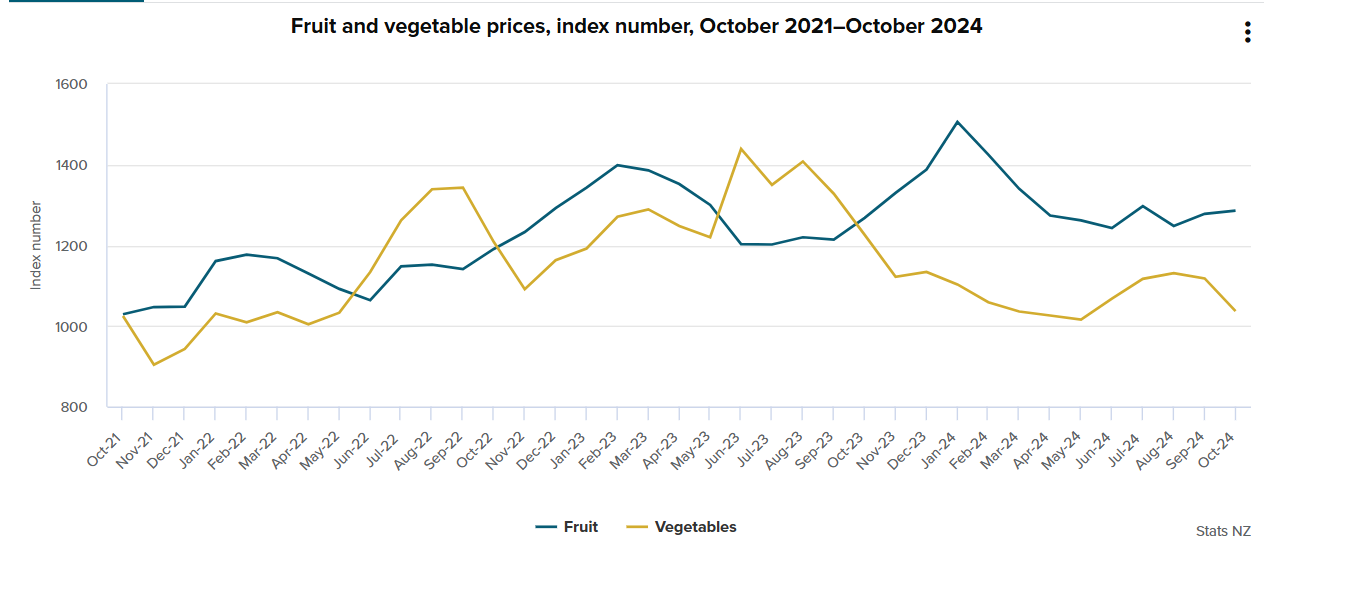Figures show mixed picture

Food prices in October fell 0.9% compared to September, according to fresh figures from Stats NZ.
The decline was largely driven by a 7.2% drop in vegetable prices, including reductions for tomatoes, cucumber, and capsicum.
Fruit prices, however, edged up by 0.6%, with apples, oranges, and bananas among the main contributors.
“Over the last two years, vegetable prices have fallen 14.2%, while fruit prices have risen by 8%,” said Nicola Growden (pictured above), Stats NZ prices and deflators spokesperson.
Overall, fruit and vegetable prices decreased by 4.1% in October. Other items that saw price declines included instant coffee, yoghurt, and potato crisps. These were partially offset by rising costs for 2L milk and fruit juice.

Annual food prices rise modestly
Despite the monthly drop, food prices increased by 1.2% in the year to October, matching the annual rise recorded in September, Stats NZ data showed.
Higher costs for restaurant meals and ready-to-eat food were key drivers of the yearly increase, up 3.4%, alongside a 2.5% rise in grocery food prices. Items such as olive oil, butter, and milk contributed significantly to the grocery price hikes.
“A 500g block of butter now costs over one-third more than it did last year, with an average price of $6.67,” Growden said. “The price for a standard 2L bottle of milk increased around 9% over the same period, averaging $4.21 a bottle.”
Vegetables keep food prices in check
While overall food prices rose annually, the fruit and vegetables group countered this trend, falling 8.9% in the 12 months to October. This decline helped ease some of the pressure from rising costs in other food categories, Stats NZ reported.
Visit the Stats NZ website for the latest figures.
Stats NZ also recently released reports about the annual net migration dropping sharply in December and New Zealand’s worsening crowded living conditions.
Get the hottest and freshest mortgage news delivered right into your inbox. Subscribe now to our FREE daily newsletter.



